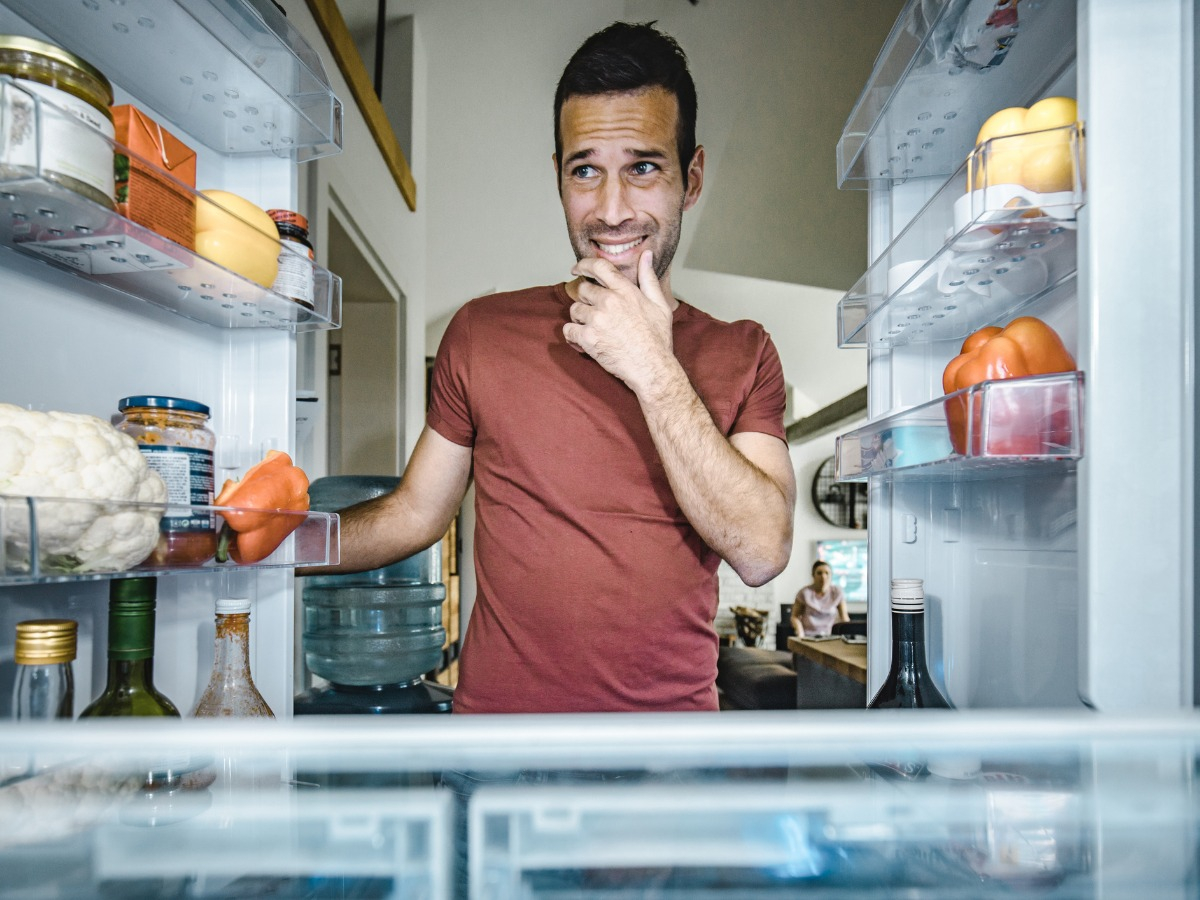
What to Do When Your Freezer Leaks Water Into the Fridge
Drip, drip, drip…you hear a subtle thumping coming from your fridge. You open the fridge door to find a puddle of water and damp food containers. Where is the water coming from, and what can you do to stop it? The culprit might be a faulty or leaky freezer. Learn what can cause a leaky freezer, how to spot the source, and what you can do to troubleshoot the issue.
What Causes Freezer Leaking Water into a Fridge
Several factors could contribute to water dripping from the freezer into the fridge. Before investigating, however, defrost the freezer by following these steps from our friends at Whirlpool. Defrosting will allow you to see what’s happening underneath thick ice build-up. The defrosting process involves removing frozen food (got a cooler or neighbor’s freezer you can stash it in?), turning off/unplugging the freezer, laying down towels to catch melted water, and cleaning the freezer’s interior.
Once you have a clear view of the freezer’s interior and parts, follow these steps to troubleshoot the leaking water!
1. Check the Ice Maker’s Water Inlet Valve for Damage
The water inlet valve connects to the wall behind the refrigerator. Its job is to open and allow water through when the ice maker mold needs to be filled up, and close when it doesn’t. If the inlet valve is damaged, loose, or clogged, it could result in a puddle of water in the back of your fridge. If you’re dealing with a pool of water, plus the ice maker has stopped producing ice, you’re likely looking at an inlet valve issue. Time for a valve replacement! This part can be tricky to replace for everyday people but only costs about $20 online.
2. Check the Freezer Drain Pipe for Clogs
Your freezer constantly produces condensation — water vapor that turns into a liquid — while keeping ice cream, snacks, and other frozen yummies cold. The resulting liquid needs somewhere to go, and it’s supposed to drip down the drain pipe into a drain pan underneath the freezer or fridge and eventually evaporate. But if the drain pipe is clogged, the liquid can’t drain out. Instead, it flows into your freezer and becomes thick ice or leaks into your fridge.
You can check and clean a drain hose on your own, even if you don’t consider yourself an HGTV-level DIYer. To unclog and clean a freezer drain pipe:
- Start by unplugging the appliance.
- Remove food and shelves to have full access to the freezer interior.
- Check your owner’s manual for help locating the drain pipe.
Next, wait for the ice to melt around the pipe opening or use a screwdriver to chip it away. Now, use a turkey baster or similar tool to squirt warm water into the drain hole and clear it of debris. The water should flow into the drain pan, which you’ll want to dry and wipe clean after unclogging the line.
3. Check the Drain Pan for Overflowing Water
Ideally, a refrigerator drain pan stays mostly dry since water should evaporate at the same rate it trickles through the freezer drain pipe. However, a faulty ice maker, clogged drain pipe, or failing door seal could all cause ice to melt faster than water can evaporate, sending more water to the drain pan than it can hold. The result? Depending on its positioning, an overflowing drain (or drip) pan can either leak onto the floor or into your fridge. Drain pans are almost always located at the bottom of your appliance.
4. Check Door Seals for Damage
A ragged, torn, or moldy door seal can lead to warmer temperatures around the seal. The resulting temperature shift causes ice to melt and water to leak from the refrigerator freezer. That water has to go somewhere, and it can trickle into your fridge or onto the floor!
Alongside a clogged freezer drain line, a faulty door seal is something you can fix pretty quickly with almost no tools. Buy a new freezer door seal (also called a gasket) that fits your fridge model online for about $40-$100. Then, remove the old door seal and replace it with a fresh seal that doesn’t let air in or out when the freezer door is closed.
5. Check the Freezer Temperature
Monitoring freezer temps is challenging. After all, you can’t stand in front of the freezer all day and keep tabs on its ups and downs! You can, however, tell if your freezer is constantly melting and refreezing, melting and refreezing by setting a coin on top of a small container of frozen water. If the coin is at the bottom of the container or anywhere other than on top of the ice the next day, you know the freezer fluctuated in temperature! The resulting water could trickle out of the freezer and into your fridge.
A freezer temperature issue could be tied to a faulty temperature control thermostat, ice build-up on the evaporator fan, dirty condenser coils, or a bad start relay — in other words, trouble with more expensive appliance parts than a door seal.
Solve a Leaky Freezer Problem for Good
Some leaky freezer fixes are easy to take care of on a Sunday afternoon. Others require a few tools and a hefty dose of appliance know-how. If your refrigerator keeps having problems despite repair after repair, it might be time for a change. Fridge and freezer repair costs can add up quickly; in the long run, getting a new appliance might be your easiest solution. Get a new fridge delivered today and free repairs for the life of your agreement. Rent-A-Center’s rent-to-own fridge options won’t poke a hole in your budget. Check out your options at your nearest Rent-A-Center today.